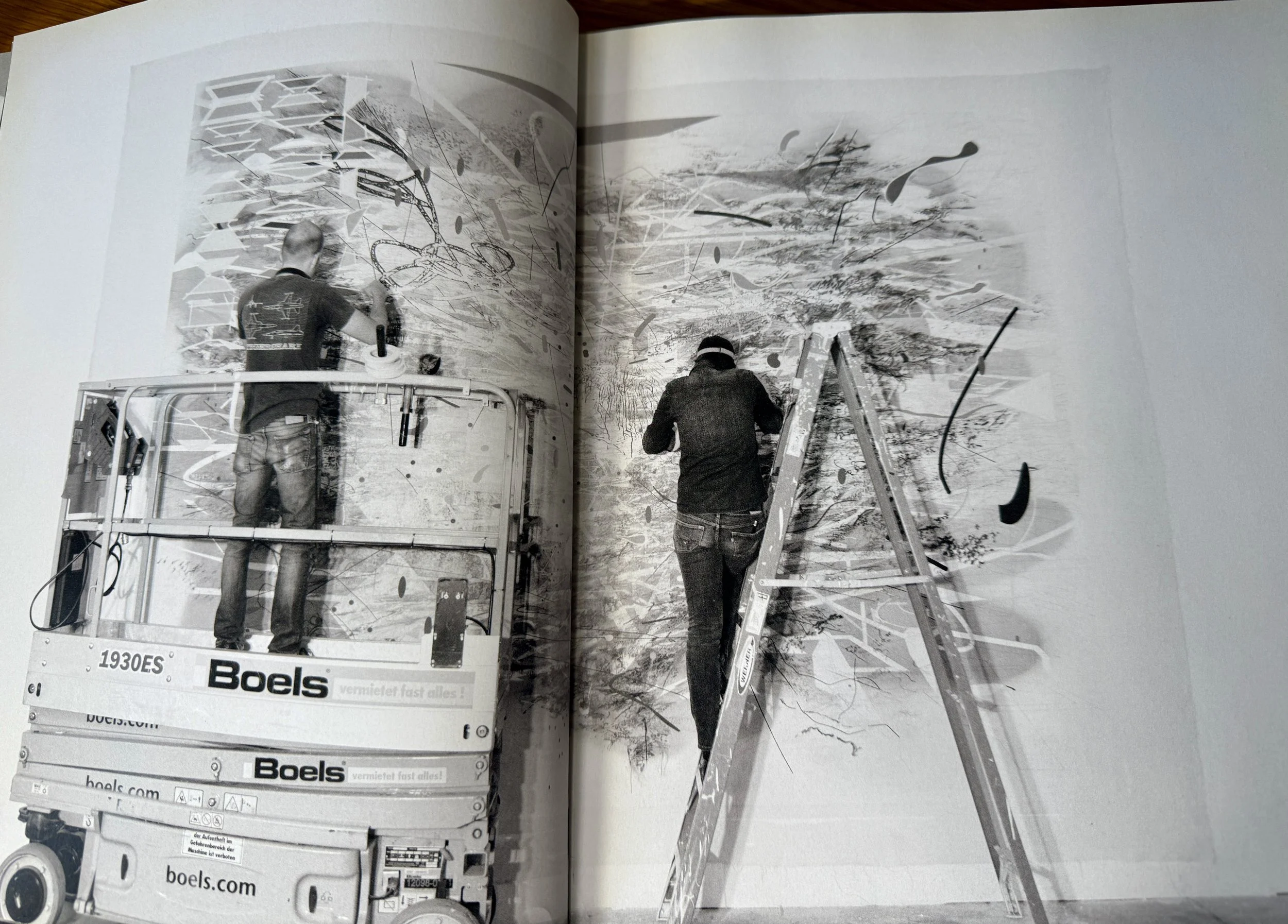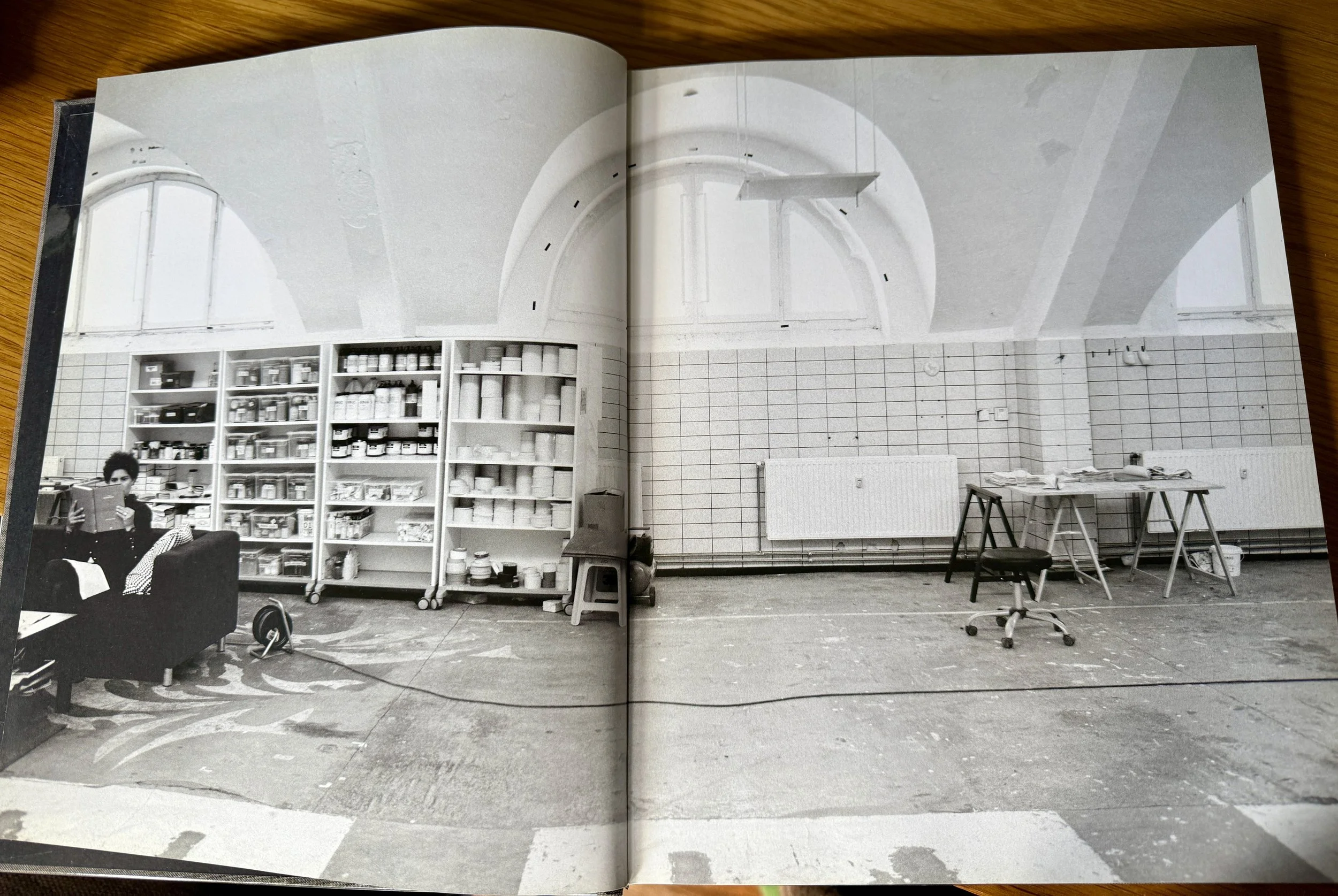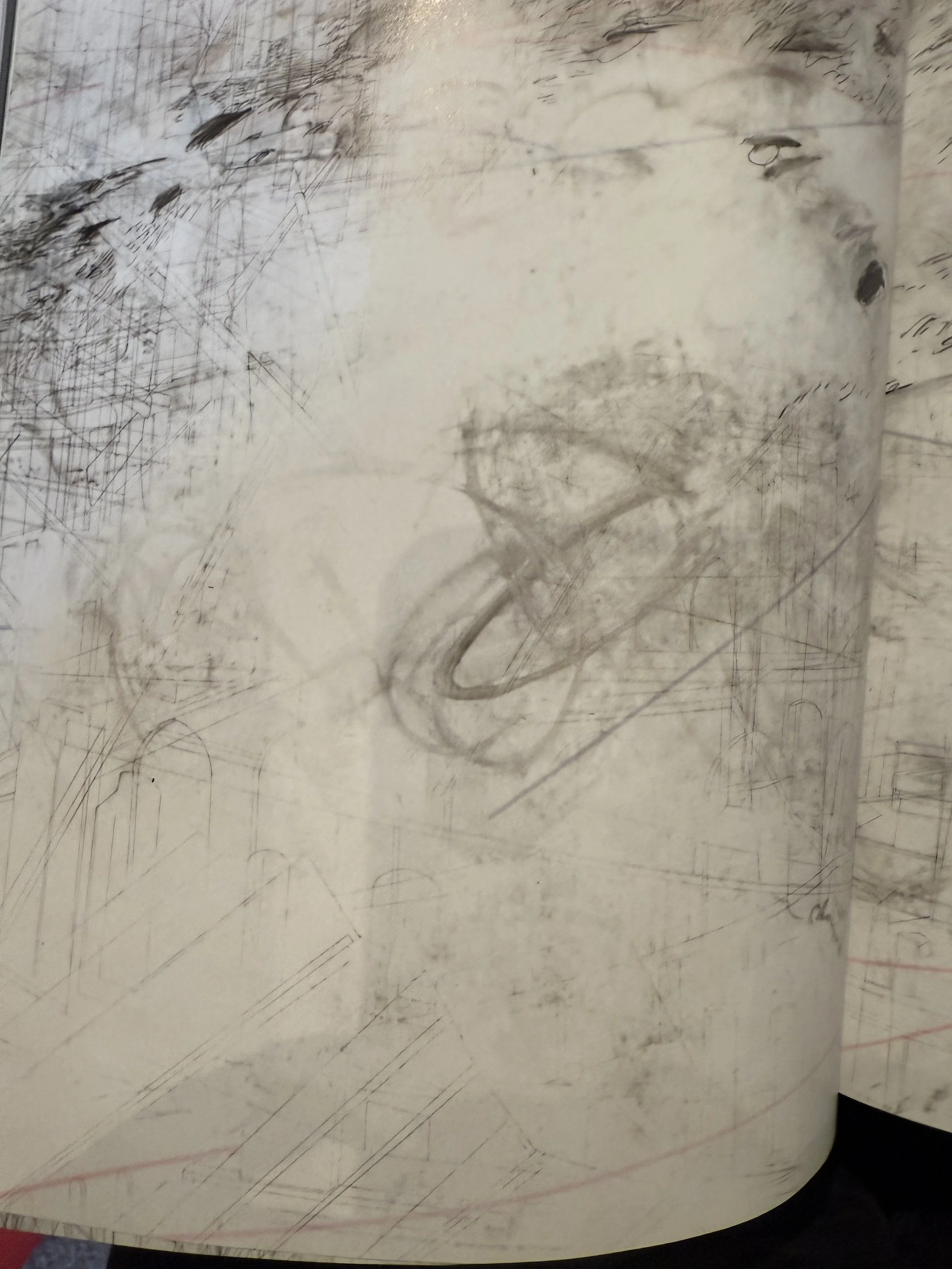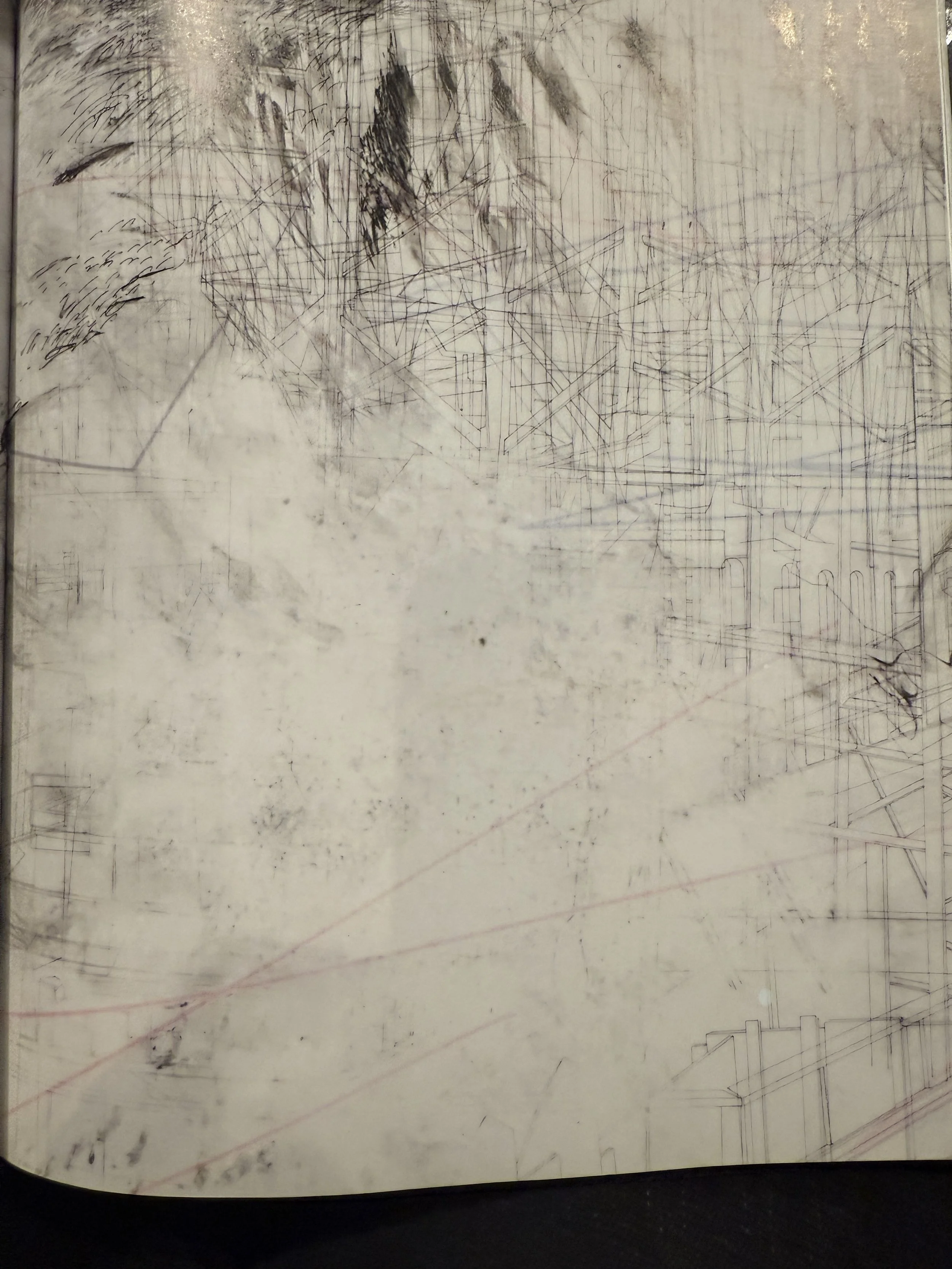Julie Mehretu artist
from Julie Mehretu: Grey Area, 2009 Deutsche Guggenheim commission.
Layering and Erasure: An Introduction to Julie Mehretu by Joan Young.
History lingers… An archaeologist might excavate the traces of bygone times, uncovering relics and customs of past communities, in the strata of sediment that that settle amid the new
Rendering of cartographic and architectural drawings form the foundation of the layered compositions. She began to look at her mark making as signifiers of social agency, as individual characters.
The relationship between the marks portray the interaction of individuals and communities with each other and with their environment. They assemble and engage in dialogue or debate, presenting a multitude of stories in the chroncile that plays out in the image. (p30) Stadia 2, characters populate image like throngs of fans. A collective energy. Marking denote atmosphere and ‘feeling tone’. A cosmos from a distance but on approach becomes a series of other pictures, stories and events. Is this what PALIMPSEST is? from a distance a universe from afar but up close is a collection of individual stories.
The physical engagement with the artwork by the viewer, who is complelled to change her position with regard to Mehretu’s wall sized canvases in order to take in their shifts in scale and layered imagery. Like navigating streets in a city.
JM explores the psychogeographic landscape. Use of monotone, in Grey Areas, suggests a ghostly confluence of multiple realities.
JM = first layer of gesso covered with wireframe architectural drawings, overlapping shapes of flat colour of clouds of pigment that guide narratives that unfold in the layering. Renderings and markings in ink and acrylic paint are separated by thin coats of acrylic medium, sanded to create a polished, transparent surface. Successive layers present new scenes in the story, they also veil some of what came before them.
Siemon Allen describes JM’s method:
“Paradoxically, the construction of the paintings like a series of erasures, each stage eradicating the last….however, history is not rubbed out. Rather it is reinscribed. Erasure operates not as a destructive but as a generative force.”[1]
Palimpsest (the artwork), involves actual erasure, with the artist reworking an older, unresolved canvas by removing paint and pencil markings to create a spare, haunting image. (Rebecca R Hart, “Mapping, Erasing, Drifting,” in Julie Mehretu: City Sittings, p. 58.
Berlin paintings, what was present but now is missing = paint is scraped away or blurred, erasing part of the architecture. Erasure provides evidence of the decisions and actions made during the creation of a painting, revealing some of the history of a process that might otherwise be rendered mute due to the thorough reworking of the surface. The view follow these traces to uncover the artist’s methods, a process parallel to the imaginary excavations Mehretu herself has performed to make the work. p33.
The layering and partial veiling of information. “kaleidoscopic configuration”.
Chris Abani = “Her paintings do make you lose your appetite for the definable.” (Chris Abani, “Layer Me This”, Parker 76 (2006), p.39.
TAKEAWAYS: layering and erasure, history lingers. Archaeologist on a dig - uncovering and revealing. Relationship between marks and wider subjects like communities and environment. Marks have a collective energy. The throng of fans in a stadium. Loud voices if undecipherable. A TONE. Engagement of the view in her works - big and involved and look different close up and far away. Her method of layering which becomes the narrative. PALIMPSEST. History not rubbed out but rather reinscribed. Erasure as a generative force. The artist reworks unresolved canvases.
[1] Siemon Allen, “Destruction/Construction,” in Julie Mehretu: City Sittings exh.cat (Detroit: Detroit Institute of Arts, 2007), p51.
An Archaeology of the Air, Brian Dillon. p45-57.
between 15th and beginning of 19th century - a fascination with for the broken, decayed and the abandoned. The ruin.
“at first glance, Mehretu’s paintings simply continue her researches into the BUILT, the UNBUILT and the UNBUILDABLE environment. p47.
JM paintings have been described as historical paintings, but they also explode the very notion of discrete historical instant.
Forteresses, exploded boundaries. the modern ruin.
Berlin paintings, chaos, vanished past. Berliner Plätze, 2008-9.
“in these latest paintings however a new form of disappearance is evident; the artist has begun to erase selected areas of drawings and marks alike, producing an effect that is only on the surface that of an allegorical obliteration or seething cloud of dust."
“ moments of articulate erasure in the paintings amount to a kind of restoration: of openness, contingency …” “Charged with the dust of demolition and rebuilding. “p50
TAKEAWAYS- erasure becomes demolition, smudging becomes clouds of dust. But erasure is also restoration of openness, making space for the new, hopefullness. The ruin. The built, the unbuilt and the unbuildable. Erasure as disappearance. Vanished past.







